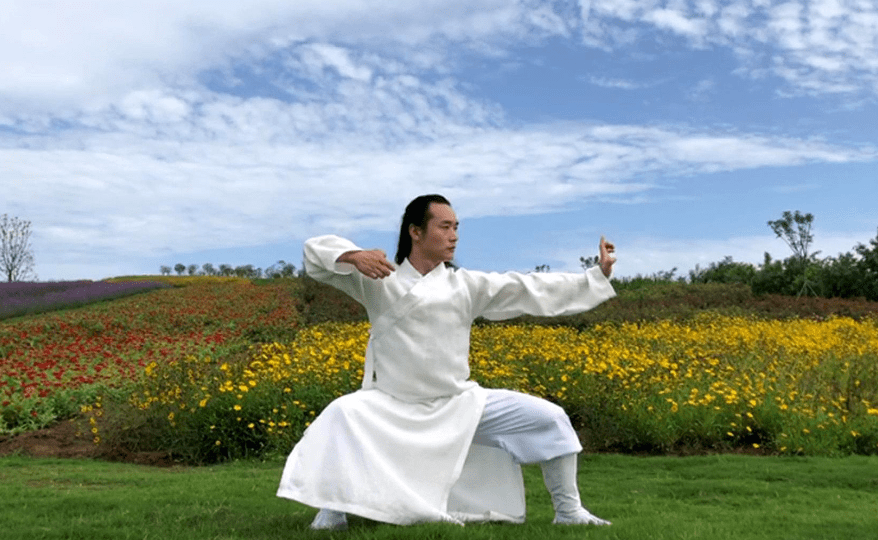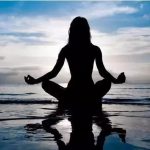What is Ba Duan Jin? Why we should practice?
- Introduction to Ba Duan Jin:
- Overview: Ba Duan Jin is a health exercise technique with a history of nearly a thousand years, cherished by health enthusiasts throughout history.
- Eight Sections: Divided into eight sections, each corresponding to a specific movement aimed at improving overall health.
- Advantages:
- Regulates Bodily Fluids: Enhances the function of regulating bodily fluids and improves blood circulation.
- Massage Effect: Provides a gentle massage effect on abdominal organs, benefiting the nervous, cardiovascular, digestive, respiratory, and musculoskeletal systems.
- Modern Version: Updated with changes in content and name, maintaining its effectiveness and accessibility.
- Accessibility: Requires no equipment and can be practiced anywhere, suitable for individuals of all ages and genders.
- Health Benefits: Strengthens weak individuals and aids weight loss in overweight individuals.
- Practice Details:
- Segments: Comprises eight different movements, each repeated multiple times and coordinated with breathing.
- Gentle Movements: Movements are gentle and suitable for people of all ages.
- Postures: Can be performed in standing or sitting postures, with specific movements tailored to each posture.
- Key Instructions: Eight key instructions summarize the standing and sitting postures, ensuring proper execution.
- Therapeutic Effects:
- Traditional Rehabilitation: Serves as an effective traditional rehabilitation exercise, offering therapeutic benefits despite its apparent simplicity.
- Elegant and Flexible: Reflects the elegance and flexibility of “silk brocade,” hinting at its graceful and beneficial nature.
Things beginners should know when practicing Ba Duan Jin
- In the beginning, don’t worry too much about the details or overdoing the movements.
- Ba Duan Jin has no negative effects, so you can practice it with confidence.
- In the initial stages, don’t focus on your breathing; natural breathing is sufficient.
Tips for practicing Ba Duan Jin:
- Wear loose-fitting clothing because for the exercises to be effective, your limbs need good blood circulation, and loose clothing helps with that.
- The environment is important, so try to practice in a place with fresh air.
- It’s better not to eat immediately after practicing Ba Duan Jin.
- After the practice, your body temperature may rise, and you may sweat, but you should wait for about half an hour before taking a shower.
- Within 30 minutes after finishing the practice, avoid eating, drinking, going to the bathroom, or showering.
How to practice Ba Duan Jin with a GIF tutorial
Preparation to start
- Start by working on your legs.
- Stand with your left foot open, shoulder-width apart, and slightly bend your knees.
- Place your two palms in a semi-circular shape in front of your abdomen.
- Take a few deep breaths to calm your body and mind, maintaining this standing posture.

The first movement: “两手托天理三焦”(Two Hands Support the Heavens and Regulate the Three Burners)
- Separate the fingers of both hands and cross them in front of your abdomen.
- Straighten your legs, and lift both palms to chest height.
- Internally rotate both arms as you lift them upwards towards the top of your head, with your palms facing upwards. Keep your palms over the top of your head and look straight ahead.
- Slightly bend your knee joints, and lower your arms, bringing your palms back in front of your abdomen.
- In the illustration, the movement of the arms in the air is one cycle, and you should do this 6 times.

Key Points of the Movement:
- Use the base of your palms to push upward with force, combined with the “Baihui” acupoint on the top of your head, which helps your body’s energy rise upwards.
- At the same time, lifting your arms upward should be roughly parallel to your ears, creating a motion that extends your back, as if you’re trying to squeeze your spine.
- This movement is an important part of Ba Duan Jin, and it’s essential to perform it correctly to experience its benefits.
The second move: “左右开弓似射雕” (Open the Bow Left and Right Like Shooting an Eagle)
- Step your left foot to the left and cross your hands in front of your chest.
- Stabilize your stance like you’re pulling a bowstring to shoot an arrow. Pull your right hand to the right side of your chest while your left-hand forms the shape of the number eight (your thumb and index finger form an eight, and the other three fingers are bent) and push it to the left. Imagine you are drawing a bowstring, and keeping your focus on your fingertips.
- Shift your weight to the right, make a circular motion with your right hand, bring back your left foot, and hold both hands in front of your belly while standing still. Repeat the same movement in the opposite direction, and do this a total of 3 times.

Key points of the movement:
- Opening the bow left and right helps to loosen your stiff shoulders and upper back.
- When you pull as far as possible, you might feel a slight tingling in your index fingertip. This is the Shangyang point at the beginning of the Large Intestine meridian on the hand, and it stretches the entire Large Intestine meridian running through the shoulder, neck, and entire arm.
The third move: “调理脾胃须单举”(Regulating the Spleen and Stomach with a Single Raise)
- Raise your left hand’s palm root upwards to the upper left side of your head while pressing down with the palm root of your right hand below.
- Then, lower your left arm in front of your abdomen, alternating between left and right three times.

Key points of the movement:
- When you raise and lower your arms, focus your strength on the palm roots, and make sure your fingertips are relatively facing each other. This will help fully stretch the Large Intestine meridian.
The Fourth Movement: “五劳七伤往后瞧” (Look Backward to Relieve the Five Strains and Seven Injuries)
- Slightly bend your knees and straighten your arms at your sides, with your palms facing outward. Try to turn your head as far back as possible, looking towards the left rear. Hold for a moment.
- Bring both arms back inwards and slightly bend your knees, looking forward this time. Repeat this three times, alternating between left and right.

Key Points of the Movement:
When you turn your body, aim to stretch your neck and tailbone as much as possible, and perform the movements slowly and smoothly.
Keep your neck relaxed and avoid tensing it. Your jaw shouldn’t be forced inward or upward; instead, let the neck muscles relax and stretch.
The Fifth Movement: “Shake Head and Wag Tail to Remove Heart Fire”
- Step your right foot to the side and slightly bend both knees. Raise both palms from your sides. Keep your legs half-squatting, and your arms should descend to just above your knee joints.
- Shift your body’s weight to the right, lean forward over your right foot, lower your body’s center of gravity, and let the motion be led by your tailbone, rotating your upper body to the left, passing over the left foot. Then, shift your body’s weight backward, sway your upper body from right to left, and then forward while standing up. Repeat this three times, alternating between right and left.

Key Points of the Movement:
- When rotating your body, try to elongate your neck and tailbone. Perform the movements gently, with a slow and smooth motion.
- Keep your neck relaxed throughout, and avoid straining it. Your jaw should neither be pushed inward nor upward; instead, allow your neck muscles to stay relaxed and elongated.
- If you find it challenging, you can start by doing the movement twice on each side and gradually increase the repetitions.
The Sixth Movement: “两手攀足固肾腰” (Both Hands Climb Downward to Strengthen the Kidneys and Waist)
- Stand with your legs straight and knees slightly bent. Raise both arms forward and upward, with your palms facing forward, and look straight ahead.
- Bend your elbows, and lower your palms to your chest.
- Cross both palms to your back, move them down along your spine to your buttocks, while bending your upper body forward. Slide both palms down your legs to your feet. Keep your knees straight, and look down and forward.
- Raise both palms upward and your spine will rise with them. One up and one down is one cycle. Repeat this 6 times.

Key Points of the Movement:
- When massaging the lower back and the area behind the legs, apply a little pressure because this area corresponds to the Bladder Meridian, the body’s primary yang meridian. Activating this meridian helps circulate yang energy throughout the body.
- When straightening your body upwards, do it section by section using your arms.
The Seventh Movement: “攒拳怒目增气力” (Gather Fist, Gaze with Anger to Increase Strength)
- Step your left foot to the side and create a horse-riding stance.
- Form fists with both hands at your waist, with the thumbs inside and the knuckles facing upward.
- Thrust your left fist forward, knuckles facing upward, and gaze with an angry expression.
- Transform your left fist into an open palm, then twist your wrist to form a fist again, and return it to your waist. Do this three times, alternating between left and right.

Key Points of the Movement:
- Grip the ground with your toes, clench your fist with determination, and maintain a stern, angry gaze.
The Eighth Movement: “背后七颠百病消” (Seven Shakes Behind to Dispel a Hundred Illnesses)
- Stand on your tiptoes, raise your head upward, and pause for a moment at the highest point while looking straight ahead.
- Lower your heels and lightly tap the ground, combining the rise and fall into one motion. Do this seven times.

Key Points of the Movement:
- The rising and falling of your heels is to enhance body balance. When rising, imagine pulling yourself up from level ground, gripping the ground with your toes, tightening your buttocks, and engaging your core to keep your internal organs in a tense state. When descending, it’s like an earthquake, vibrating your spine and governing vessel.
- The “Seven Shakes Behind” is the concluding part of Ba Duan Jin, which is equivalent to guiding the gathered energy back to the core. After completing the entire set of exercises, it helps to reorganize the body’s energy, preventing it from dispersing.
- Finally, bring both palms together in front of your abdomen, maintain steady breathing, and relax your entire body.

Advanced Path for Ba Duan Jin:
- Imitate the Movements.
- Practice with Natural Breathing for 3 to 6 months.
- Gradually Incorporate Diaphragmatic Breathing into the Movements for 6 months.
Two important tips of Ba Duan Jin:
- Stretching: Focus on stretching the movements during practice, starting with small movements and gradually increasing the range.
- Breath Control: Breath control involves pausing your breath during certain static postures. It’s beneficial not to hold your breath but to progress in a controlled manner.
Breathing Guidelines during Practice:
Slow: Breathe at a slow pace.
Fine: Ensure a gentle and smooth airflow.
Long: Extend the duration of each breath.
At the beginning, your breathing may not be uniform, and your breaths might be shorter. Однако, with practice, your breathing will become slower, smoother, and longer.
More You may like:
What Should Qigong Beginners Know? Quick Ways To Start
Do You Know How To Meditate? The Easy Way To Do It
How To Learn Qigong? 12 Things Beginners Must Know
What is Qi Gong? How to understand it easily?

